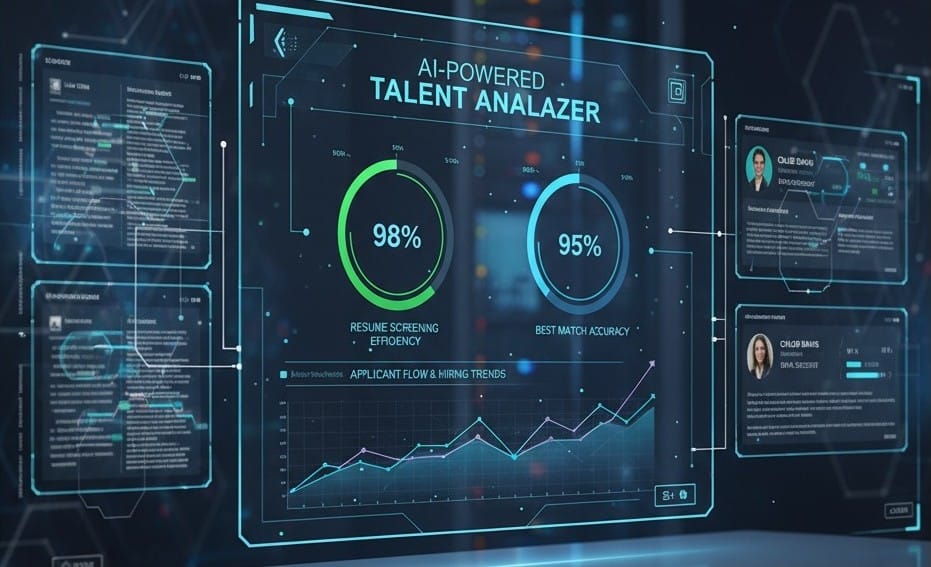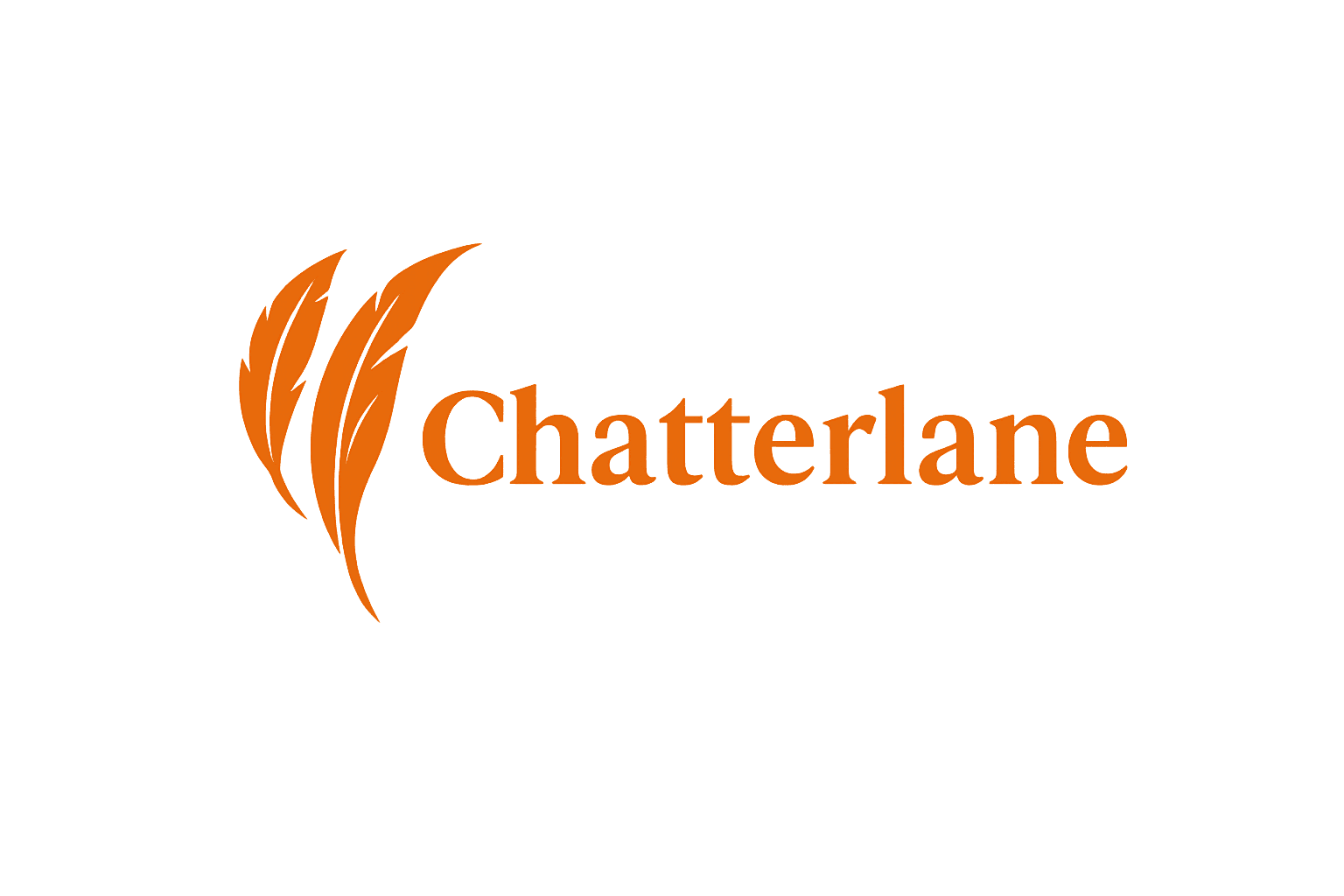
AI recruitment tools are revolutionizing hiring by automating time-consuming tasks like resume screening, candidate matching, and interview scheduling. These tools help recruiters save up to 75% of screening time, reduce bias, and improve candidate experience through timely communication and AI chatbots. By following clear action steps—defining goals, choosing the right tools, training teams, piloting, and optimizing—organizations can boost hiring speed, quality, and fairness. Embrace AI thoughtfully to hire smarter and faster today.
Introduction
Recruiting the right talent is one of the most critical challenges businesses face today. Yet, traditional hiring methods often feel slow, overwhelming, and prone to bias. Enter AI recruitment tools—powerful technologies designed to make hiring faster, fairer, and smarter.
In 2025, AI is no longer a futuristic concept but a key player in talent acquisition. These tools automate time-consuming tasks like screening resumes, scheduling interviews, and communicating with candidates around the clock. By doing so, they free up recruiters to focus on what truly matters: building meaningful connections and making better hiring decisions.
The benefits are remarkable. Companies using AI recruitment tools report cutting screening time by up to 75%, improving candidate quality, and creating a smoother experience for applicants. More than 80% of business leaders say AI is essential to staying competitive in the talent market.
In this blog, you’ll learn what AI recruitment tools are, why they matter, and—most importantly—action steps you can take to start using these tools to boost your hiring success. Whether you’re new to AI or looking to optimize your current approach, this guide will help you navigate the evolving hiring landscape with confidence and clarity.
What Are AI Recruitment Tools?
In the world of hiring, AI recruitment tools are changing the game. But what exactly are they? Simply put, AI recruitment tools are software powered by artificial intelligence designed to help companies find, evaluate, and hire the best candidates faster and smarter.
These tools use advanced technologies like machine learning and natural language processing to automate tasks that used to take recruiters hours—things like scanning resumes, matching candidates to job descriptions, and even scheduling interviews. Instead of sifting through piles of applications manually, AI recruitment software quickly identifies top talent based on skills, experience, and other important factors tailored to your company’s needs.
Beyond just speeding things up, AI-powered platforms can help reduce human bias by focusing on objective data rather than gut feelings, making the hiring process fairer. Plus, they create a smoother experience for candidates by providing timely updates and clearer communication.
The future of recruitment is already here, with AI tools evolving to understand nuances in language, culture, and skills better than ever before. Whether you’re a small business or a large enterprise, incorporating AI recruitment tools can be the secret to discovering the right people for your team without the usual headache of manual screening.
Key Benefits of Using AI in Recruitment
AI recruitment tools are more than just a new buzzword—they’re transforming how companies find and hire talent every day. Here are the key benefits that make these tools invaluable in 2025:
1. Speed Up Your Hiring Process
Recruiters often spend countless hours manually screening resumes and coordinating interviews. AI tools automate these repetitive tasks, cutting down screening time by up to 75% and reducing the overall time-to-hire from an average of 44 days to just 11 days. That means faster decisions, quicker onboarding, and staying ahead in a competitive talent market.
2. Smarter Candidate Matching
AI goes beyond simple keyword scanning. Using advanced algorithms and historical hiring data, AI identifies candidates whose skills and experience genuinely match the job requirements. This data-driven approach improves quality of hire and helps uncover diverse talent pools that traditional methods might miss.
3. Reduce Unconscious Bias
Human bias is one of the biggest challenges in recruitment. AI recruitment tools evaluate candidates based on objective data like skills and experience, which helps minimize unconscious bias in screening and shortlisting stages. While AI itself must be designed carefully to avoid bias, when done right, it supports fairness and diversity goals.
4. Enhance Candidate Experience
AI-powered chatbots handle routine candidate questions and provide timely updates, creating a smoother, more engaging application experience. Automated interview scheduling further reduces hassle for candidates and recruiters alike, resulting in higher application completion rates and a more positive impression of your employer brand.
5. Support Recruiters, Don’t Replace Them
Rather than making recruiters obsolete, AI tools give them superpowers—automating mundane tasks and delivering rich insights. This lets recruiters spend more time building relationships, interviewing more thoughtfully, and focusing on strategic hiring decisions that AI cannot replace.
These benefits show why organizations from startups to global enterprises are investing in AI recruitment tools to stay competitive, agile, and efficient in attracting top talent.
For a deeper understanding of how AI is revolutionizing talent acquisition and the latest technology trends shaping recruitment in 2025, explore the insightful Deloitte report on AI in Talent Acquisition.
Action Steps to Implement AI Recruitment Tools Successfully
Implementing AI recruitment tools might sound complex, but breaking it down into clear, manageable steps makes the journey much easier. Here’s a practical roadmap to help you seamlessly introduce AI into your hiring process:
Step 1: Define Your Recruitment Goals
Before diving into AI, clarify what you want to achieve. Are you aiming to reduce time-to-hire, improve the quality of candidates, enhance diversity, or create a better candidate experience? Clear goals help you choose the right tools and measure success effectively.
For example, if your company struggles with lengthy screening times, focus on AI tools specializing in resume parsing and automated shortlisting. If diversity is your priority, look for solutions designed to minimize bias and broaden candidate sourcing.
Step 2: Choose the Right AI Recruitment Tool
With goals in hand, start evaluating AI tools. Consider factors like:
- Ease of use for your team
- Compatibility with your current HR systems
- Features aligned with your priorities (e.g., automated interviews, candidate rediscovery)
- Pricing and scalability
- Customer support and training availability
Here are some top AI recruitment tools trusted by recruiters in 2025:
| Tool Name | Best For | Key Features | Pricing Model |
| HireVue | AI-driven video interviews | Automated video assessments, candidate scoring, analytics | Quote-based |
| Arya by Leoforce | Predictive candidate matching | AI sourcing, resume screening, talent rediscovery | Quote-based |
| Lindy | No-code automation for recruiters | Email drafting, workflow automation, screening assistance | Free tier / Subscription |
| Pymetrics | Cognitive and personality testing | Neuroscience-based games, bias reduction features | Quote-based |
| Recruit CRM | Candidate relationship management | Resume parsing, pipeline management, outreach automation | Quote-based |
| iCIMS | Enterprise-grade ATS and AI | Talent cloud platform, AI-powered screening, robust analytics | Quote-based |
Many vendors offer free trials or demos. Take advantage of these to see which tool fits best with your team’s workflow and hiring needs.
Step 3: Train Your Recruitment Team
Even the best AI tools need human expertise. Arrange training sessions to familiarize recruiters with the software’s capabilities and limitations. Emphasize that AI is a tool to support—not replace—their judgment.
Encourage the team to understand how AI makes decisions and when human intervention is needed, especially in complex or sensitive hiring scenarios. Training builds confidence and ensures smoother adoption.
Step 4: Pilot and Test Your AI Tool
Start small. Implement the AI tool with a particular role or department to minimize risk. Collect feedback from recruiters and candidates to identify glitches, user experience issues, or unintended bias.
Use real hiring data to test the AI’s recommendations and track key metrics like screening time, candidate quality, and diversity impact. Iteratively refine settings and processes based on insights gained during this pilot phase.
Step 5: Monitor, Optimize & Scale
AI implementation is not a one-time event—it’s a continuous journey. Regularly monitor performance through built-in analytics or customized reports. Look for improvements but also watch for any emerging bottlenecks or bias concerns.
Use data to optimize filters, retrain AI models, and scale AI use across teams and roles. Keep communication channels open with recruiters to adapt quickly and maintain a balanced human-AI partnership that evolves with your organization’s needs.
Overcoming Common Challenges with AI Recruitment
As powerful as AI recruitment tools are, integrating them into your hiring process comes with its own set of challenges. Understanding and addressing these hurdles early on will ensure a smoother transition and maximize the benefits AI can offer.
Addressing Bias in AI
While AI has the potential to reduce human bias, it’s important to recognize that AI systems learn from historical data. If that data contains biases, AI may inadvertently perpetuate them. To combat this, choose tools built with fairness and transparency in mind, and regularly audit AI outputs for any signs of bias. Combining AI insights with human judgment is the best way to maintain ethical hiring practices.
Ensuring Data Privacy and Compliance
Candidate data is sensitive, and compliance with regulations like GDPR and CCPA is a must. When selecting AI recruitment tools, verify they adhere to data protection standards and have robust security measures in place. Clear communication with candidates about how their data is used builds trust and maintains your company’s reputation.
Keeping Humans in Control
It’s tempting to rely heavily on AI automation, but hiring is ultimately about people. Avoid over-reliance on AI by ensuring recruiters stay involved in key decision-making steps, such as interviews and final selections. AI should be a tool to empower recruiters, not replace their expertise.
Handling Candidate Skepticism
Some candidates may feel uneasy about AI evaluating their applications. Transparency helps here—many companies include clear messaging about AI usage and offer human contact points for questions and feedback. A positive candidate experience remains paramount, so balance AI efficiency with a personalized touch.
By proactively addressing these challenges, organizations can build trust in their AI tools and create a recruitment process that is efficient, fair, and human-centered.
Real-World Success Stories: How AI Recruitment Tools Are Making a Difference
The true proof of AI recruitment tools’ power lies in their real-world impact. Let’s look at how several organizations have transformed their hiring process and outcomes by adopting AI-driven solutions.
Case Study 1: A Global Tech Company Cuts Time-to-Hire by 60%
One leading technology firm implemented an AI resume screening tool to handle its massive volume of applications. Before AI, recruiters spent weeks sorting resumes. After adoption, the tool automated initial screening, reducing time-to-hire from 40 days to just 16 days. The system also helped identify highly qualified candidates who might have gotten overlooked, improving quality of hire and increasing retention rates.
Case Study 2: A Healthcare Provider Boosts Diversity with AI
A large healthcare organization wanted to improve diversity in its hiring pipeline. They deployed an AI-powered sourcing and screening platform designed to minimize unconscious bias by focusing solely on skills and experience. Within six months, they saw a significant increase in hires from underrepresented groups, proving that AI, when used thoughtfully, can support inclusion goals.
Case Study 3: A Startup Enhances Candidate Experience Using AI Chatbots
A fast-growing startup struggled with delayed candidate communication due to limited recruiter bandwidth. By integrating AI chatbots on their careers page, they automated answers to common questions and interview scheduling. Candidates received instant responses 24/7, leading to a 30% increase in completed applications and positive feedback on the recruitment process.
These stories highlight that AI recruitment tools aren’t just futuristic concepts—they’re actively helping companies meet their hiring goals faster, fairer, and with improved candidate satisfaction.
To expand your AI toolkit beyond recruitment, don’t miss our detailed resource on Top Free AI Tools 2025 for Writing, SEO, Visuals & More.
Conclusion
AI recruitment tools are rapidly reshaping the hiring landscape, offering incredible benefits such as faster hiring, better candidate matches, reduced bias, and improved candidate experiences. However, successful adoption requires a clear plan, choosing the right tools, thorough training, and continuous monitoring.
By following the action steps outlined in this guide, organizations of all sizes can implement AI thoughtfully to boost hiring success without losing the essential human touch. Embracing AI in recruitment isn’t about replacing recruiters but empowering them to make smarter, data-driven decisions more efficiently. The future of hiring is here, and it’s time to harness AI to find the right talent faster and fairer.
Frequently Asked Questions (FAQs)
1. What are AI recruitment tools and how do they work?
AI recruitment tools use machine learning and natural language processing to automate tasks like resume screening, candidate matching, and interview scheduling, helping recruiters quickly find top candidates.
2. How can AI tools reduce bias in hiring?
When designed properly, AI evaluates candidates based on objective criteria like skills and experience, minimizing unconscious human biases often present in manual screening.
3. Which AI recruitment software is best for small businesses?
Tools like Lindy offer no-code automation with affordable pricing suited for smaller teams, while others like HireVue and Arya cater to larger enterprises with more complex needs.
4. How do recruiters maintain control when using AI?
Recruiters stay involved in interviewing and final decisions, using AI insights to support rather than replace their judgment, ensuring a balanced human-AI partnership.
5. What training do recruiters need for AI hiring tools?
Training should focus on software navigation, understanding AI’s decision logic, recognizing when human intervention is needed, and ethical AI hiring practices.
6. Are AI recruitment tools compliant with data privacy laws?
Reputable AI tools comply with regulations like GDPR and CCPA, employing strong security measures and transparent data handling to protect candidate information.
7. Can AI improve candidate experience during recruitment?
Yes, AI chatbots and automated scheduling provide timely updates and instant responses, making the process more engaging and reducing applicant drop-off.
8. How do companies measure success with AI recruitment tools?
Success is measured through reduced time-to-hire, improved quality of hire, increased diversity, enhanced candidate satisfaction, and efficient recruiter workflows.


Leave a Reply